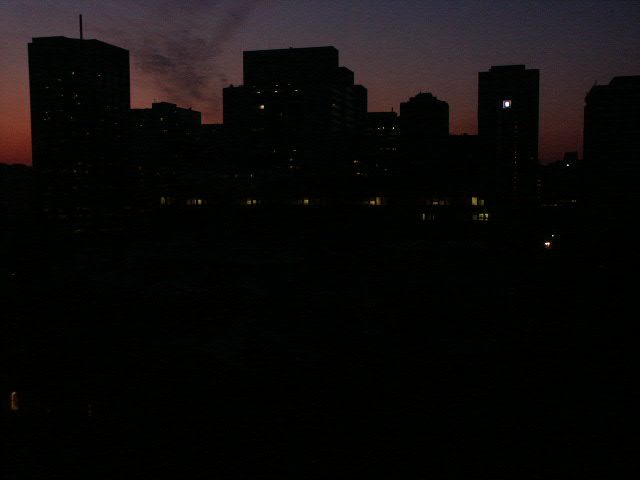When network disconnects
- Transfer

If you survived the bummer of the “2000 problem,” Y2K, then you may remember this hype with virtually no consequences. With the transition of the calendar from 1999 to 2000, many predicted the discovery of catastrophic errors in the software of machines that controlled our banks and infrastructures. The potential catastrophe did not live up to expectations, but at the beginning of the new millennium, another serious infrastructural catastrophe occurred, which led to massive power outages (blackouts) in North America. On the scale of the tragedy, it might seem that the belated consequences of Y2K worked, but the real cause of the outages was simply the organizational problems of the network itself.
Built-in protective equipment
Although outages on a scale of those that occurred in the early 2000s are quite rare, small local outages almost certainly occur sooner or later. Although power plants are motivated to provide maximum protection against these incidents (no energy - the meters do not spin), there is no guaranteed way to protect against lightning striking in power lines or expensive equipment, or from illegible electricians overloading panels and damaging transformers, or from birds, winding nests in substations.
In theory, in the event of any problem (failure of the electrical system), there are a great many protective devices designed to minimize downtime. Most of the problems are short-term failures, which resolve quickly enough. Lightning may strike the line or a branch may fall on it. Instead of tripping the safety switch, which will then need to be turned on manually, small automatic reclosing devices (ARs) can reapply voltage to sections of the network that have experienced a temporary failure (intermittent damage). In the case of permanent damage, a larger switch will trip, but it will have to be turned on manually after repairing the damage by electricians. Disposable fuses, which,

Toronto during a massive power outage
Perfect rejection
But all this protective equipment has its drawbacks, and under certain conditions it can start to behave badly, which can lead to unusual consequences. This happened during a 2003 northeast trip when the transmission line in Ohio came into contact with a tree. Typically, such a case would be quickly resolved with the help of protective equipment and network operators. But it was a summer day, and the contact was due to the fact that the line sagged more than usual, transmitting a current close to the maximum possible. More current means more thermal expansion of the wires, and more likely to come into contact with what you don’t need.
Since it was a summer day, after switching off the first transmission line, all normal load plus all peak load had to be distributed along other circuits in order to avoid a lack of energy. And usually it would be easy to implement, but the remaining circuits were also under peak load, and after additional energy was suddenly transferred to them, they turned off, as a result of which more lines became overloaded, and even more circuits turned off. As a result, more than 50 million people in the US and Canada were left without electricity. At that time, it was the second most common blackout [the largest blackout in history has occurred in India in 2012and affected 620 million people. - approx. transl.], and such simple circumstances as a hot day and a small computer error led to it, which allowed cascading outages to quickly get out of control.

Times Square during a shutdown in 2003.
It should be noted that energy companies are commercial organizations, so building a power grid that is more resilient than necessary does not make commercial sense. Of course, it always makes sense to have extra safety power, and the Ohio company could really act dismissively at some point, but at least they weren't really negligent. In addition, it is always easy to find the guilty one with the back mind.
Disconnections as a business model
 On the other hand, there were also such outages that were specially organized by companies that sought to profit from this. The California Energy Crisis of 2000-2001 is an almost elementary example of a conflict of interest when an energy seller like Enron, which controls the supply of energy to the state, also trades in energy futures. This practice has already been banned, but it took this company, known today for corruption, dubious business practices and bankruptcy, to catalyze changes in laws that allowed such a lack of regulation in the energy market. California during this crisis was constantly subjected to cascading blackouts, despite the fact that the power system was reliable enough to withstand all requests, and the generating capacity was enough to meet the needs of the entire state without any blackouts.
On the other hand, there were also such outages that were specially organized by companies that sought to profit from this. The California Energy Crisis of 2000-2001 is an almost elementary example of a conflict of interest when an energy seller like Enron, which controls the supply of energy to the state, also trades in energy futures. This practice has already been banned, but it took this company, known today for corruption, dubious business practices and bankruptcy, to catalyze changes in laws that allowed such a lack of regulation in the energy market. California during this crisis was constantly subjected to cascading blackouts, despite the fact that the power system was reliable enough to withstand all requests, and the generating capacity was enough to meet the needs of the entire state without any blackouts. 
New York during the 1977 shutdown
We start a power plant by lighting
Despite Enron Regulator Increasesin North America, which is capable of dealing with such problems, utilities are required to restore power after a shutdown. Although damage to the network must be repaired, supplying energy to it from a nuclear power plant or from a gas turbine is not as easy as flipping a switch. If a power plant ceases to generate energy, it needs either external power or the so-called power supply to start it. a black start system (generators) that launch larger diesel generators that provide the necessary energy. It is necessary to start steam boilers, move control rods, supply fuel - and all this requires energy. Usually, companies use hydropower stations for a “black start”, but in those places where it is impossible to dam the river, other technologies are used.
Small power outages can happen anywhere, and large outages are relatively rare, despite the aging infrastructure and negligent companies. Of course, on a network-wide scale, energy transfer can follow a very complex pattern. In the next articles in the series, we will look at smart grids: the modernization of the power grid and how modern technologies help improve it.
